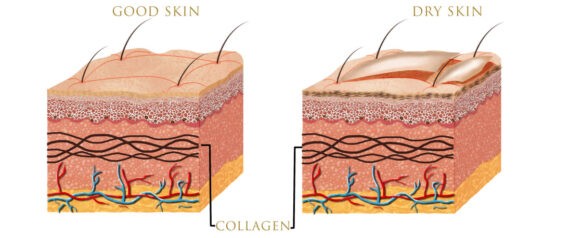 What is Dry Skin?
What is Dry Skin?
Dry skin is generally a non-serious condition; it is uncomfortable and not pretty to look at though. The discomfort is usually due to itching, scaling, and cracking. It’s a myth that people blessed with oily skin never have to deal with dryness. Even with naturally oily skin, people tend to get usual periods of dryness.
There are numerous underlying factors of dry skin. For instance, you might have dry skin naturally. However, other factors can also lead to dry skin. The condition can also affect any body part. Commonly, it tends to affect the arms, legs, and hands.
Since this is not too serious of a condition, you don’t need to worry about the treatment. In most cases, treatment options like over-the-counter creams and moisturizers and little lifestyle changes are more than enough. If this issue remains untreated even then, then you should visit the doctor.
Dry skin is generally the result of environment. However, there are a few other reasons such as allergy from something, or a reaction to any medicine. Even certain diseases can also significantly affect one’s skin. Potential causes include:
Research has indicated that following are a few of the possible types of dry skin:
Generally, this condition is temporary, and people only complain about it during dry climates. However, for some, it may be a lifelong condition. Signs and symptoms of it largely depend on your age, health, surrounding, and most especially how much time one spends out of doors.
Dry skin can subsequently result in:
It is no secret that dry skin can affect anyone and everyone. However, there are risk factors that tend to increase the chance of you developing dry skin. These factors include:
With increasing age, people are more likely to become a victim of dry skin. As you grow older, the production of oil in the pores starts to decrease which, in turn, increases the risk of dry skin.
There’s a higher chance of you experiencing allergic contact dermatitis or eczema, both conditions related to dry skin if you’ve a history of such conditions. Similarly, a history of other allergic diseases can also put you at an increased risk.
Dry skin occurs more commonly during the dry months which are during the fall and winter when the levels of humidity are quite low. Contrastingly, in the summer, high humidity levels help to stop the skin from drying.
The treatment varies as per the cause of the condition. In some special cases, patients are recommended to skin specialists by their general physicians. At times apart from the usual medications, ointments, and creams, a life change is also recommended.
Simple lifestyle changes to soothe dry skin:
It can only be completely treated if the right moisturizer2 is used. You can determine the right moisturizer with the help of your skin type. So, if your skin is excessively dry, then you need to choose a petroleum-based product.
During the summer months, you can switch back to a water-based solution, which is lighter, if your skin is comparatively less dry by then. Moreover, lotions with antioxidants and grapeseed oil can also help to trap water in the skin, thus reducing the dryness.

Canada Canadian Pharmacy dispenses all medications from licensed and regulated independent pharmacy partners internationally, including but not limited to Australia, Canada, New Zealand, India, Mauritius, Turkey, United States, Singapore and the United Kingdom. All Images on this site are registered trademarks of original manufacturers, international exporters, and property of their respective owners and are for reference only. Canada Pharmacy Online procures all products from licensed regulated international in order to provide you unbeatable lowest prices and prescription discounts for all your prescription medications, medications and Canadian Drugs at Canada Pharmacy Online.
2005-2023 Rxdrugscanada.com